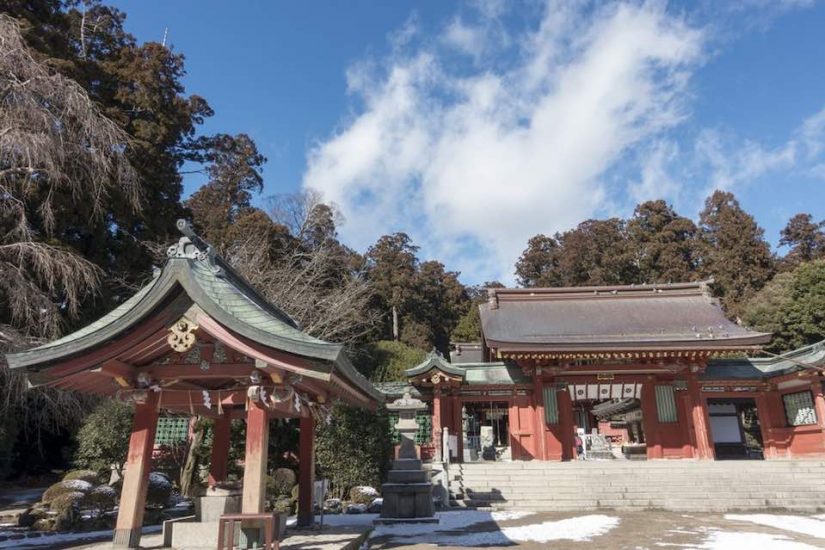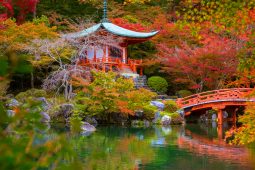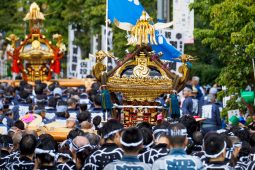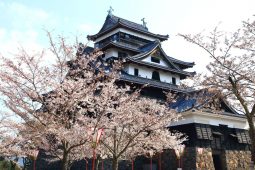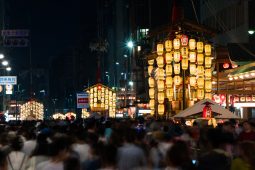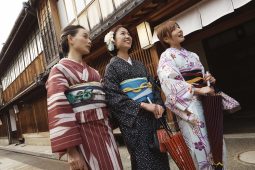If you live in Japan, or you’re just visiting, you’ll probably be visiting a shinto shrine at some point, for any number of reasons (but probably sightseeing). If not, you really should. It’s a chance to see something very different from home, and beautiful as well. Shrines tend to receive a bit less attention overseas than Japan’s temples, possibly because they’re less familiar, or maybe just because you don’t see quite as many of them in Kyoto.
This article won’t be a tourist’s guide to finding the best shrines to visit: For that, I suggest looking up some of the largest ones (Suwa is a good start), or finding some local ones, and that’s assuming this site won’t have a guide to just that before long, which it probably will. Instead, this article will look into how to recognise a shrine (in case the signs give you trouble), and more to the point, the culture and ideas behind them so that you can go in knowing a little more about them.
To start with, here’s how you recognise a shrine at a glance. They will almost always have a suffix to the name: jinja (神社), yashiro (社), jingu (神宮),— gu (宮), myojin (明神), sha (社 again), mori (守) or taisha (大社) are the main ones. If you can’t find a sign with the name, keep an eye out for the big red arch at the front. Between the two, you should be able to tell if what you found on the road is a shrine or not. At least, for the shrines that are actual buildings. Some are much smaller; more on that in a bit.
Shinto is an animistic faith, and as such it’s founded on the belief that there are kami — spirits or gods — in every single part of nature, and even in some human-made objects. Obviously, not all of these will have names, let alone their own shrines, but they’re all treated with respect on principle. In the context of a shrine, the shrine is usually dedicated to one kami (sometimes more than one, but it’s rare), who is housed in a goshintai (lit. divine body), an object that serves as a physical host. This is in turn housed in the honden (main sanctum), which is not normally meant to be entered. During festivals, the goshintai is brought out in a small, portable shrine that keeps it from being seen, and paraded through the streets, carried by a team of volunteers.
This leads into the more unusual structure of some shrines. Larger ones might have an upper and lower shrine, while lower ones won’t have a structure at all. This goes back to the two age groups of Shinto. One contains the modern established pantheon and stories of the gods, and came with the Yamato dynasty, around 250 CE (or AD, if you prefer). Before that, Shinto was far more abstract, and collected around a small handful of gods, as well as treating boulders, large trees and entire mountains as both kami and goshintai in one (these, obviously, wouldn’t be hidden away in a shrine).
We don’t have time to go into a long discussion of pre – and post-Yamato Japan, even if anyone were interested, so let’s just summarise and say that the old ways live on in a few places, some more obviously than others.
Suwa Taisha, for example, incorporates some pre-Yamato aspects, but there are more obvious examples (and we will, for the moment, leave aside smaller roadside or house shrines). Sometimes, you might find — with no building attached — an enormous tree or boulder with braided ropes, paper tassels or both around it, hidden away in a forest or somewhere in the mountains. If so, congratulations: You’ve found the oldest kind of shrine there is in Japan, built around some part of nature that just amazed enough people that they went and built around it.
With that reasoning in mind, spending a few minutes in the Japanese wilderness, it’s easy to understand why there are so many shrines like this; you’re going to see a lot of nature where, even now, awe is the only real response you can fall back on.
When looking at the role of shrines, it can help to remember that even back when shinto was officially the state religion, Japan has always had a pick-and-mix attitude to faith, splitting roles between different religions and going to whichever one suited the occasion. For example, shrines see their biggest surges in visitors for coming-of-age days and the new year. Part of this attitude might come back to the idea throughout shinto that it should not intrude with your daily life. Festivals and personal visits to pray at the shrine are organised so that they’re not daily, but more arranged around knowing who to call, when, and what for when you need help, without it taking over your life. Similarly to this, the kannushi, or head priest of all but the most major shrines, will have a day job; he’s present for day to day maintenance of the shrine and any rites and festivals, but he could — to take the example closest to my house — be a farmer in his own time.
Bringing this back to the point of view of someone coming to admire the sights for a moment, though, before we close out the article: Shrines offer an unusual look that you won’t see in, for example, a temple. Part of that comes from the focus of it: Shrines are often located in places where the surrounding nature is beautiful and awe-inspiring. Even in a major city, at minimum, the grounds will boast quite a few very old and impressive trees, and maybe a small pond or garden.
Adding to that, shrines tend to go a little easier on massive statues and the like, though you might still find a few for guardian spirits, such as komainu (which some readers might know as lion-dogs or foo dogs), or foxes. Paper tassels and braided ropes are everywhere, but you won’t find any gold leaf or other flashy displays that might be seen elsewhere: Instead, in a Shinto shrine, much of the effort of decorating goes into the woodwork. Look, for example, at the roof or the higher beams, as close as you can, and you’ll often see hundreds of patterns and figures carved into the wood: it’s a quieter kind of decoration, but something that blends in with the nature around it rather than standing out too much by itself, and different from what you’ll see anywhere else.
If you’re interested in hearing a little more about the ins and outs of shrines, you’ll see a bit more about them in one of my other articles, Japan’s Preservation of its Past. For now, I strongly recommend visiting any shrines near you when you’re in Japan — and if you do, now you’ll know a little more about where you are!


